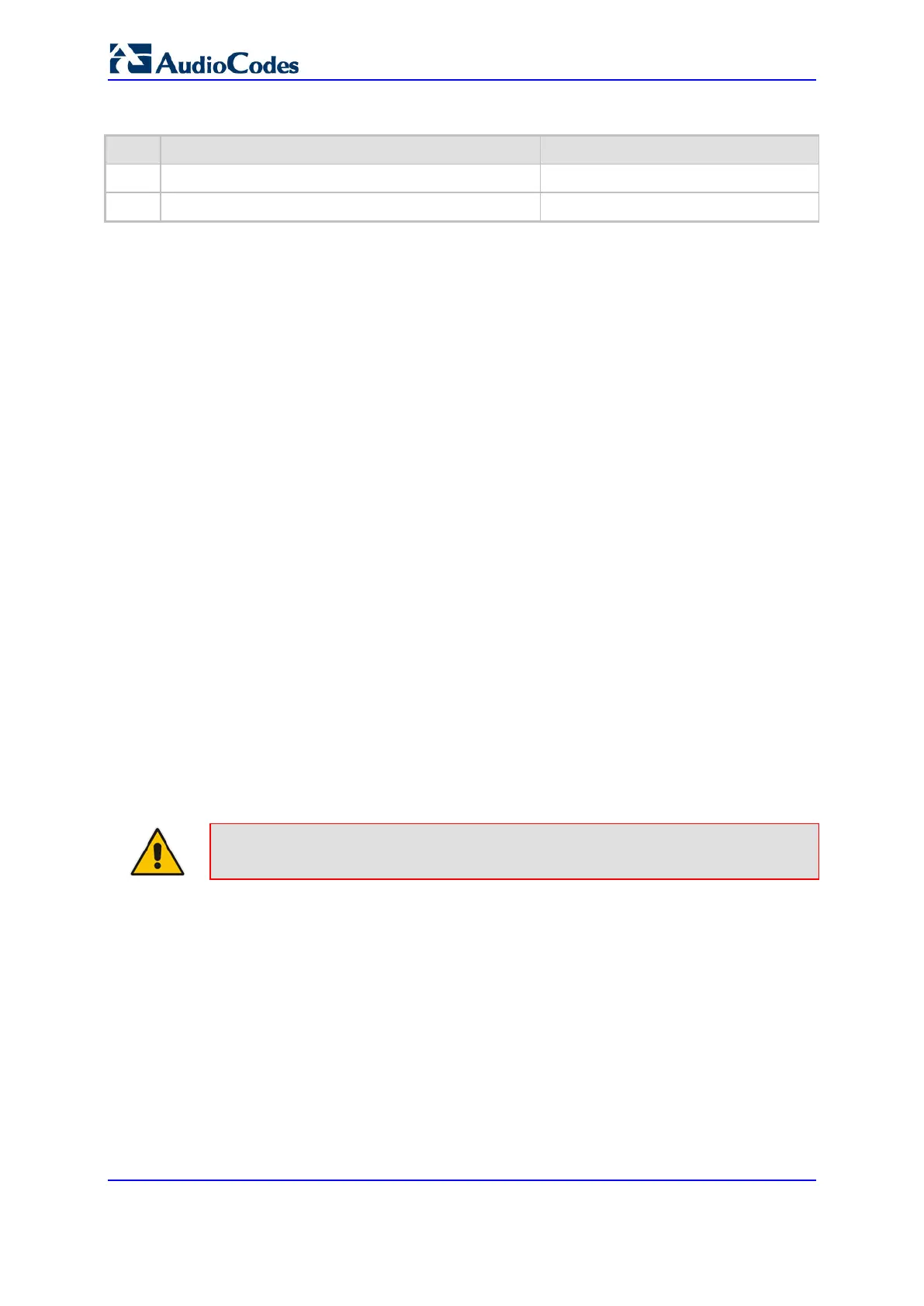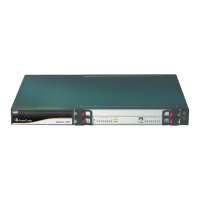User's Manual 602 Document #: LTRT-89730
Mediant 3000
2. In the IP Group table, add the following IP Groups:
Index Source URI Input Destination URI Input
1 - -
2 P-Called-Party-ID Route
In this example, a match exists only for Classification Rule #1. This is because the source
(1111) and destination (2000) username prefixes match those in the INVITE's P-Called-
Party-ID header (i..e., "<sip:1111@10.33.38.1>") and Route header (i.e.,
"<sip:2000@10.10.10.10.10>"), respectively. These SIP headers were determined in IP
Group 2.
33.2 Configuring Message Condition Rules
The Message Condition table lets you configure up to 20 Message Condition rules. A
Message Condition defines special conditions (requisites) for incoming SIP messages.
These rules can be used as additional matching criteria for the following:
Classification rules in the Classification table (see ''Configuring Classification Rules''
on page
595)
IP-to-IP routing rules in the IP-to-IP Routing table (see ''Configuring SBC IP-to-IP
Routing Rules'' on page
603)
IP-to-IP outbound manipulation rules in the IP to IP Outbound Manipulation table (see
''Configuring IP-to-IP Outbound Manipulations'' on page
627)
Message Condition rules are configured using the same syntax as that used for Conditions
when configuring Message Manipulation rules in the Message Manipulations table (see
''Configuring SIP Message Manipulation'' on page 371). You can configure simple Message
Condition rules, for example, "header.to.host contains company", meaning SIP messages
whose To header has a host part containing the string "company". You can configure
complex rules using the "AND" or "OR" Boolean operands and also use regular
expressions (regex), for example:
"body.sdp regex pcmu" can be used to enable routing based on the offered codec
(G.711 Mu) in the incoming SDP message.
"body.sdp regex (AVP[0-9||\s]*\s8[\s||\n])" can be used to enable routing based on
payload type 8 in the incoming SDP message.
Note: For a description on SIP message manipulation syntax, refer to the SIP
Message Manipulations Quick Reference Guide.
The following procedure describes how to configure Message Condition rules through the
Web interface. You can also configure it through ini file (ConditionTable).

